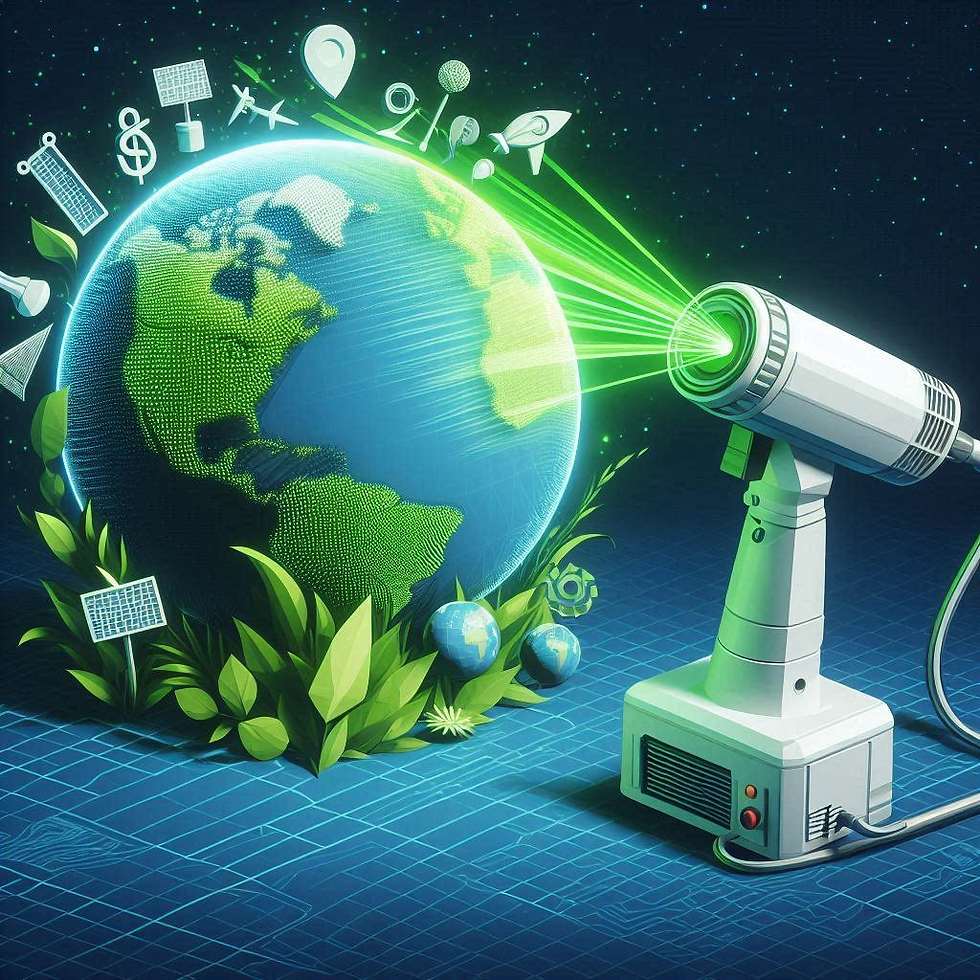Nanosecond to Femtosecond: Australia's Quantum Leap in Ultra-Fast Laser Technology
- mainals
- Jul 18, 2024
- 3 min read
Australia has long been at the forefront of scientific research and technological innovation, and in recent years, the nation has made significant strides in the field of ultra-fast laser technology. This quantum leap from nanosecond to femtosecond lasers is not just a matter of academic interest; it's a development that promises to revolutionise multiple industries and propel Australia to the forefront of advanced manufacturing and scientific research.
Understanding Ultra-Fast Lasers
To appreciate the magnitude of this technological leap, it's essential to understand the basics of ultra-fast lasers:
Nanosecond lasers: Operate on a timescale of billionths of a second (10^-9 seconds)
Picosecond lasers: Operate on a timescale of trillionths of a second (10^-12 seconds)
Femtosecond lasers: Operate on a timescale of quadrillionths of a second (10^-15 seconds)
The progression from nanosecond to femtosecond represents a thousand-fold increase in speed, opening up new possibilities in precision, efficiency, and applications.
Australia's Journey in Ultra-Fast Laser Technology
Early Pioneers Australia's journey in ultra-fast laser technology began in the 1980s with pioneering work at institutions like the Australian National University (ANU) and the University of Sydney.
Collaborative Research The establishment of the Australian Research Council Centre of Excellence for Ultrahigh-bandwidth Devices for Optical Systems (CUDOS) in 2003 marked a significant milestone, fostering collaboration between universities and industry partners.
Recent Breakthroughs In recent years, Australian researchers have made several groundbreaking achievements:
Development of new laser materials at the University of Adelaide
Creation of ultra-precise optical clocks at the University of Western Australia
Advancements in laser-driven particle acceleration at the University of Queensland
Key Applications and Impacts
Advanced Manufacturing Ultra-fast lasers are transforming manufacturing processes across Australia.
Precision Micromachining: Femtosecond lasers allow for the creation of intricate structures at the microscale, crucial for industries like medical device manufacturing and electronics.
Surface Texturing: Ultra-fast lasers can modify surface properties at the nanoscale, enhancing the performance of materials.
Medical and Biological Sciences The precision of femtosecond lasers is opening new frontiers in medical treatments and biological research.
Laser Eye Surgery: Femtosecond lasers allow for more precise and less invasive corneal surgeries.
Neurosurgery: Ultra-fast lasers enable highly precise brain surgeries with minimal collateral damage.
Environmental Monitoring and Climate Research Ultra-fast laser technology is enhancing Australia's capabilities in environmental science.
Telecommunications and Data Processing The speed of femtosecond lasers is pushing the boundaries of data transmission and processing.
Defence and Security Ultra-fast laser technology has significant implications for Australia's defence capabilities.
Challenges and Future Directions
While Australia has made remarkable progress in ultra-fast laser technology, several challenges remain:
Funding and Infrastructure Continued investment in research facilities and equipment is crucial to maintain Australia's competitive edge.
Skills and Workforce Development There's a growing need for specialists trained in ultra-fast laser technologies.
Commercialisation of Research Bridging the gap between academic research and commercial applications remains a challenge.
Future Outlook
As Australia continues to advance in ultra-fast laser technology, several exciting developments are on the horizon:
Attosecond Lasers Research is already underway to develop attosecond lasers (10^-18 seconds), promising even greater precision and new applications.
Quantum Technologies Ultra-fast lasers are expected to play a crucial role in the development of quantum computers and quantum communication systems.
Clean Energy Applications Femtosecond lasers could revolutionise solar cell manufacturing and contribute to more efficient energy storage solutions.
Space Exploration Ultra-fast laser technology is set to enhance Australia's space capabilities, from satellite communications to deep space exploration.
Australia's quantum leap in ultra-fast laser technology, from nanosecond to femtosecond, represents a significant achievement in scientific and technological innovation. This advancement is not just a matter of academic pride; it's a development with far-reaching implications for multiple industries and sectors.
As Australia continues to invest in and develop ultra-fast laser technologies, the nation is positioning itself as a global leader in this cutting-edge field. The applications of this technology - from advanced manufacturing and medical treatments to environmental monitoring and defence - promise to enhance Australia's economic competitiveness, scientific capabilities, and quality of life.
With ongoing collaboration between academia, industry, and government, Australia is well-positioned to maintain its leadership in this rapidly evolving field. The quantum leap in ultra-fast laser technology not only showcases Australia's scientific prowess but also opens up new possibilities for solving complex global challenges, from climate change to healthcare. As we look to the future, the advancements in ultra-fast laser technology promise to keep Australia at the cutting edge of innovation, driving progress and prosperity in the 21st century and beyond.




Comments